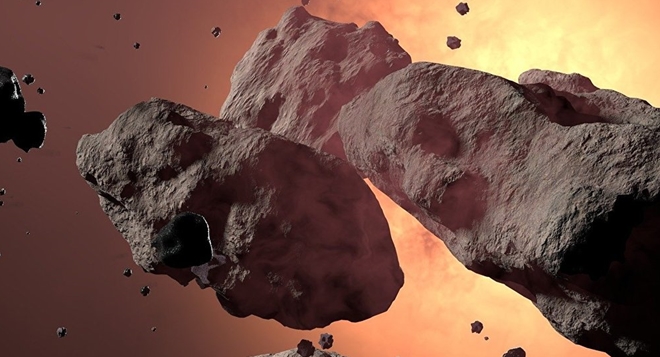Scientists Spot Asteroid Visiting from Outside Our Solar System
The astronomers believe the object comes from outside our solar system, from far away in our galaxy. If their assumptions are confirmed, the asteroid would be the first interstellar object to be observed and confirmed by astronomers.
The object was initially assigned a name C/2017 U1 (C for "comet"), which was later changed to A/2017 U (for "asteroid").
According to Phys.org, the strange visitor is less than 400 meters in size (a report by The Sun pegs it at 160 meters) and is speeding at remarkably high speed of 44 kilometers per second toward the constellation Pegasus.
Astronomers around the world have urgently set their telescopes to collect as much data about the object as possible. Later analysis will hopefully allow them, and us, to understand the origin and the composition of the asteroid.
The astronomers who spotted the new object earlier this week thought it was a general asteroid or comet, until they noticed that it doesn't seem to orbit the sun.
 |
"Its motion could not be explained using either a normal solar system asteroid or comet orbit," says Rob Weryk, postdoctoral researcher at the University of Hawaii Institute for Astronomy.
"It's coming from very far away, but we can't actually backtrack how far away it started," says Simon Porter of the Southwest Research Institute. "It could be that it's coming from outside the solar system, but it's really hard to tell."
An astronomer named Tony Dunn tweeted a simulation he made himself that claims that the asteroid actually comes from the vicinity of the star Vega in the constellation Lyre.
Unsurprisingly, the news has invigorated UFO seekers. The UFO Sightings blog wrote about A/2017 U: "You know, everything about this space object which visited our solar system for the first time is strange and we may wonder whether the object, which seems to follow its own path, is not a large icy rock but an interstellar spacecraft piloted by a highly advanced alien race coming from a place near the star Vega, in the constellation Lyra."
However, the Universe Today website warns that it is too early to make any assumptions. The asteroid is already starting to dim, the website notes, so astronomers will have to work very quickly in order to gather as much data as possible.

